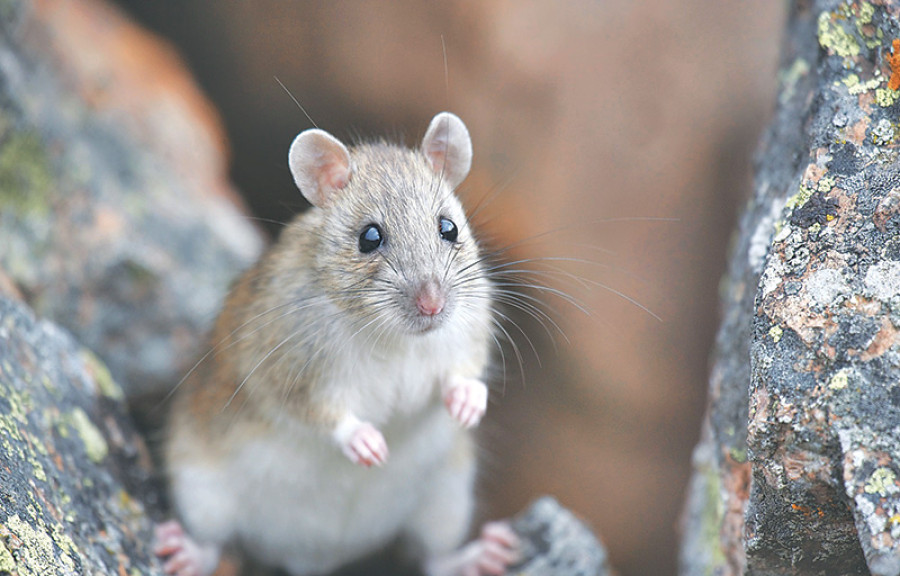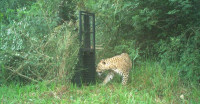National
Climate change to favour small mammals: Study
Contrary to popular belief that climate change is having adverse effects on public health, environment and wildlife in general, a recent study has come up with a report suggesting that it would rather have a positive impact, especially on small mammals.
Chandan Kumar Mandal
Contrary to popular belief that climate change is having adverse effects on public health, environment and wildlife in general, a recent study has come up with a report suggesting that it would rather have a positive impact, especially on small mammals.
A modelling study conducted among 20 specific small mammals has revealed that the climate change is going to benefit small mammals in the future as their potential habitat is likely to expand.
“Generally, climate change has shown that the number of wildlife is reducing and their habitat is shrinking. However, it seems, especially in the case of small mammals, climate change is favouring them,” said Menaka Pant Neupane, principal investigator with the project ‘JaibikMap: Nepal’s Biodiversity and Climate Change Tool for the Future’ that conducted the research.
The study was jointly carried out by IUCN Nepal in collaboration with the Department of National Parks and Wildlife Conservation (DNPWC), Ministry of Forest and Soil Conservation, Central Department of Botany of Tribhuvan University and Kathmandu Living Lab.
The project, which aims to address national-level impacts of climate change on distribution and habitat shifts for mammalian species, has predicted that habitat of those small mammals will rather expand in future.
“Not necessary all the animals should have same impacts of climate change. We conducted this research among selected mammals with an aim to assess habitat situation of small mammal in the light of climate change,” added Neupane.
The study has suggested that significant trend of expansion of their habitat in future in comparison to their current area of territory. According to the research, their habitat area in future is likely to expand by up to three fold.
According to Nepal’s National Red List (2011), the country has identified 130 species of small mammals of which 51 species belonged to volant communities or flying species and the rest are terrestrial small mammals.
Of the 20 selected small mammals, habitat of four groups of species—Himalayan or Turkestan rat, Asian House shrew, Long-tailed Mountain Shrew and Five-striped palm squirrel or Northern palm squirrel—will see growth more than others.
The study has calculated about their potential habitat in reference to two Representative Concentration Pathways (RCPs)—RCP 4.5 and RCP 8.5.
The RPCs are four greenhouse gas concentration trajectories designed to support research on impacts of climate change. They predict climate future, which means amount of greenhouse gases in four different periods in future.
According to RCP 4.5, the GHG emissions will go up around 2040 and then decline. Likewise, emissions continue to rise throughout the 21st century in RCP 8.5.
Potential habitat of the Himalayan or Turkestan rat will be expanded to 16,695 square km and 15,262 square km respectively under RCP 4.5 and RCP 8.5 from its current area of 9,559 square km, the study showed.
The research has also demonstrated elevational shifts of these animals. The Himalayan or Turkestan rat exhibited a maximum northward elevation shift of 753 metres and 1,034 metres under RCP 4.5 and RCP 8.5 scenarios in 2070 respectively.
On the other hand, Asian House Shrew showed a maximum southward elevation shift of 917 metres and 816 metres under the two RCPs in 2070.
According to experts, a large number of small mammals live in mid-Hills.
“As temperatures increase, areas at mid-Hills and higher elevations will become suitable for new species, mostly from the expanding southern area,” said Hari Basnet, Mammalian Data and GIS analyst with IUCN
Nepal. “The current habitat of species will continue to have the similar condition in the future due to increase in temperature.”
The rising temperature may favour a high growth of vegetation which in turn guarantees food sources, according to Basnet.




 16.12°C Kathmandu
16.12°C Kathmandu















